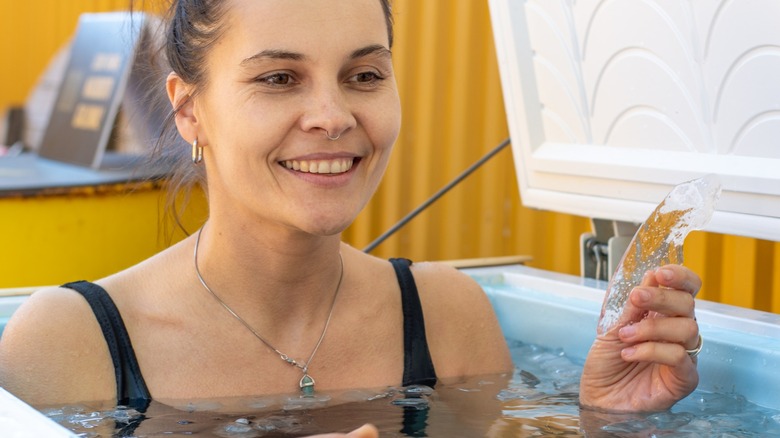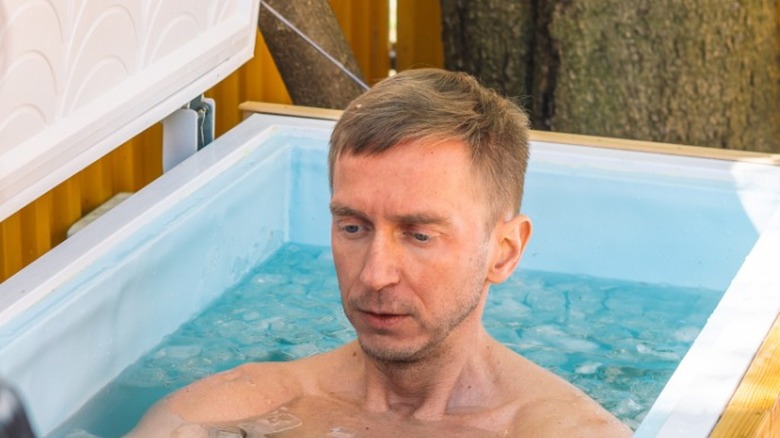How Long Do You Really Need To Spend In An Ice Bath For The Full Benefits?
Part of maintaining a healthy lifestyle is recovery. Whether you've had a knock on the shin, a bruise, a sprain, or even just extremely sore muscles the day after a workout, you may know the secret trick for numbing that pain: ice.
Ice is a great option for injuries within the first two days of the acute episode (via UAMS Health). The cold from ice not only helps to lessen the feeling of pain but can also fight inflammation and swelling. But you want to be careful about icing directly on your skin, which can cause burns. Further, if you keep ice in contact with your injury for an extended period of time, say longer than 20 minutes, you may actually reverse the healing effects and do more damage to the tissue.
One popular recovery method that can immerse large portions of the body in ice is called the "ice bath."
What is an ice bath?
An ice bath is literally a bath of cold water that's filled with ice. Some people take natural ice baths in frozen or near-freezing lakes during the winter months, though most people take ice baths at home or at the gym by pouring buckets of ice into a tub of cold water. College athletes have even been known to take ice baths after games in large recycling bins. According to Bustle, ice baths have become popular in part due to their emergence as another TikTok health trend.
There are many potential health benefits that bathing in ice can offer. Just staying in the cold water can build mental resilience, which is good for your mental health. Some health experts note that the cold — much like regular icing — lowers the inflammatory and pain responses. Health experts also report paradoxical responses to the immersive experience in cold water. The shock of the cold water can elevate your energy and bolster the release of biochemicals like norepinephrine, which can increase your heart rate. But ice baths are also reported to slow heart rate and activate the parasympathetic nervous system — or the rest-and-digest system — which may promote feelings of calmness.
Ice bath best practices
Making an ice bath at home is easy. All you need is a container — like a bathtub — and ice and water. The typical water temperature for a homemade ice bath ranges from 50 to 59 degrees Fahrenheit (per Bustle). When you enter the bath, you may experience a cold shock. Some people may wish to ease their way into the bath, while others prefer the plunge. It is all about experience and personal preference.
Health experts suggest that you resist the urge to panic by taking long and slow breaths as you enter. You do not have to stay in the ice bath for 15 minutes your first time. Treat it like a sauna — aim for a few minutes at first and then take a break. Over time, slowly build up your comfort level until you can remain in the bath for 10 to 15 minutes. Some experts note that you shouldn't spend more than 15 minutes in the ice bath. While side effects like shivering are normal, staying in the ice bath for too long can actually lead to hypothermia, so be sure to listen to your body.



